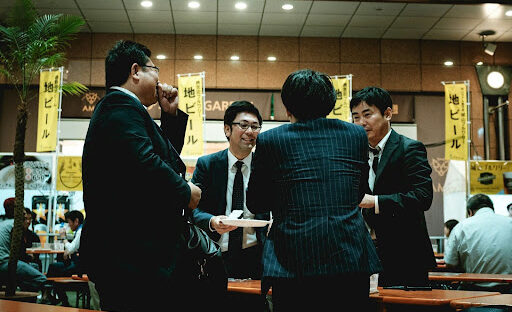Why Decision-Making Takes Longer in Japan – and How to Navigate It

Many international clients often remark on how long it takes to reach a final decision when working with Japanese counterparts. But why exactly is this the case?
There are a few key reasons behind this disconnect in time expectations. It stems from fundamental cultural and communication differences — from language (high-context vs. low-context) to thought patterns (spiral vs. linear logic) and, most significantly, to a unique Japanese approach to decision-making called nemawashi. Understanding nemawashi is often the missing link for foreign teams who feel frustrated or confused by the extended timelines in Japan.

What Is Nemawashi?
Nemawashi literally means “going around the roots,” and the concept originates from gardening — gently digging around the roots. In business, it refers to laying the groundwork before a formal meeting. It involves speaking one-on-one with key stakeholders, sharing your proposal, gathering feedback, and building support in advance.
The goal? By the time you walk into the meeting room, everyone is already on the same page. No surprises, no wild cards. If you’ve done nemawashi properly, the meeting is more of a formality — a space to confirm consensus rather than debate it.
Why Do Meetings Take Longer?
It’s not that the decision-making itself is slow — it’s that much of it happens before the meeting, not during. In many Western business cultures, meetings are used to brainstorm, play devil’s advocate, and test out ideas on the spot. But in Japan, springing new ideas in a formal setting can backfire. It may confuse stakeholders, derail the conversation, or even be seen as disrespectful — especially if it puts someone on the spot or contradicts group consensus.
So if you walk into a meeting expecting to pitch multiple options and bounce ideas around, but your Japanese colleagues are expecting a polished, pre-aligned plan, you’re not just misaligned — you may be unknowingly undermining the process.

How to Navigate Japanese Decision-Making
To work in a more time-efficient manner with Japanese teams, you need to prepare differently. Start by asking your Japanese counterparts about the expectations for the meeting:
- Are they expecting a brainstorming session or a formal proposal?
- Is consensus already being built behind the scenes?
To successfully carry out nemawashi, follow these five steps:
- Identify Key Stakeholders – Who will be affected, and who has influence?
- Initiate Informal Conversations – Usually one-on-one; use these to understand concerns and expectations.
- Share Your Proposal and Gather Feedback – Incorporate suggestions and note potential objections.
- Build Consensus – Reflect the feedback and show how it was addressed.
- Formalize the Decision in the Meeting – Use the meeting to confirm what’s already been agreed. Don’t introduce major new ideas — if needed, repeat the nemawashi process.

Have you been surprised by the pace of decision-making in Japan? Or struggling to align with your Japanese partners? As a leader in cross-cultural business consulting, we help global teams thrive in Japan.
Schedule a discovery call today to explore how we can support your success in the Japanese market — with strategies that foster clarity, trust, and meaningful results.
For inquiries, please contact YOUNEEDS Co., Ltd.






